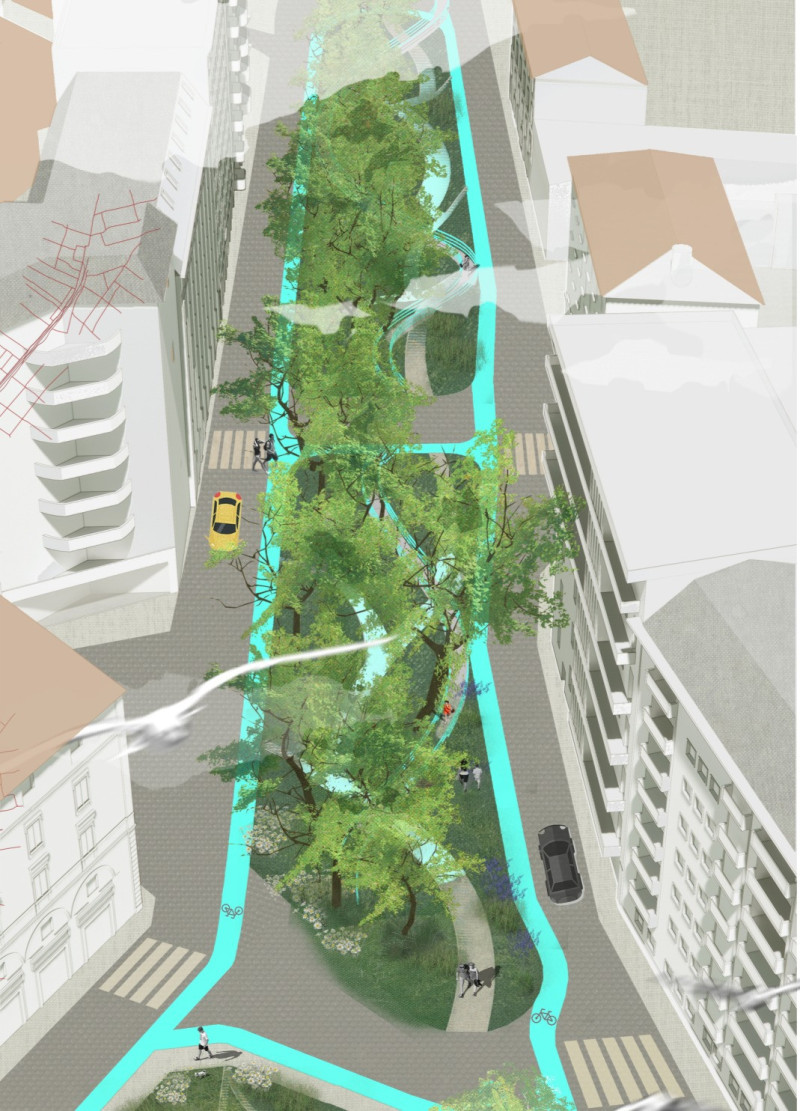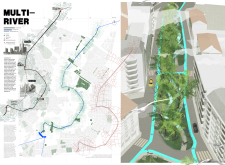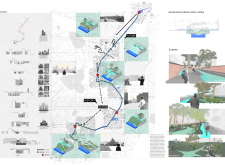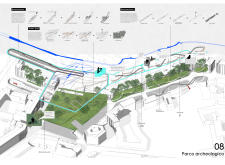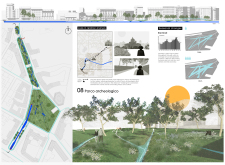5 key facts about this project
The project under analysis is a contemporary architectural design situated in an urban context. This structure exemplifies modern principles of functionality, sustainability, and aesthetic coherence. Its primary purpose is to serve as a mixed-use facility that accommodates residential, commercial, and community spaces, facilitating a dynamic environment for its occupants and visitors. The design thoughtfully integrates environmental considerations while addressing the needs of a diverse user group, reflecting a commitment to social sustainability.
The architectural concept is rooted in creating a cohesive relationship between the building and its surroundings. Large windows are utilized to maximize natural light and enhance the connection between indoor and outdoor spaces. These openings also provide stunning views of the urban landscape, reinforcing the dialogue between the edifice and its environment. The facade incorporates varying textures and materials, embracing an approach that prioritizes both visual interest and durability.
Materiality plays a crucial role in the project. The primary materials employed include reinforced concrete for structural components, glass for the facade, and sustainable wood finishes for interior spaces. These selections not only exemplify modern construction techniques but also contribute to the overall energy efficiency of the building. The use of rainwater harvesting systems and green roofs exemplifies the project’s commitment to sustainability, showcasing innovative approaches to water management and enhancing urban biodiversity.
The project is characterized by its unique design approaches that set it apart from typical mixed-use developments. One of the notable features is the integration of communal spaces that encourage social interaction among residents and visitors. This design choice reflects a keen understanding of the importance of community in urban environments, promoting a sense of belonging and engagement. Additionally, the adaptation of flexible floor plans allows for various uses, from collaborative workspaces to leisure areas, showcasing an innovative response to evolving lifestyle needs.
Landscape design is meticulously considered, with green areas strategically placed to provide both aesthetic appeal and recreational opportunities. The incorporation of native plant species contributes to local biodiversity and reduces maintenance requirements. The strategic positioning of seating areas and walking paths invites users to interact with both the building and its surrounding landscape actively.
Attention to detail is evident throughout the project. The careful selection of finishes, such as eco-friendly paints and low-VOC materials, enhances indoor air quality, promoting health and well-being. The lighting design incorporates energy-efficient fixtures that adjust to natural light levels, contributing to the building's overall sustainability goals.
For those interested in architectural plans, sections, and the broader design narrative of this project, a deeper exploration of these dimensions is encouraged. This analysis serves as an invitation to engage with the architectural elements that define this unique mixed-use facility, illustrating how thoughtful design can respond to contemporary urban challenges. Exploring the architectural designs and ideas presented can provide valuable insights into the synthesis of function and aesthetics within the modern architectural landscape.


